People
Faculty Graduate Students Research Staff Alumni
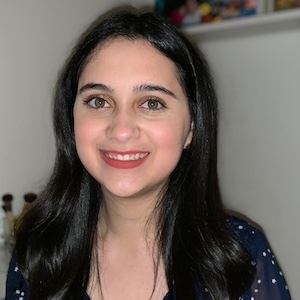
Mariana Aguilar, PhD Student
Mariana Aguilar graduated with a BS in Planetary Science and Chemistry with a minor in Spanish in May 2024 from Purdue University, Indiana. She began pursuing her PhD in Fall 2024. During her undergrad, she actively worked researching the water ice nucleation properties of lunar regolith simulants to understand the ancient lunar atmosphere and she studied the effects of microplastics on clouds in the Earth’s atmosphere. In addition to her passion for research, she is committed to promoting diversity and inclusivity in STEM fields as a member of the Women in Science Program and as a volunteer student teacher for the Saturday Morning Astrophysics Outreach Program within the Physics and Astronomy department at Purdue. She is extremely excited and grateful for the opportunity to continue her education at Purdue with Dr. Pearce this coming fall! Her interests outside of research include reading, enjoying nature, traveling, and spending time with her family.

Kaustub Anand, PhD Student
Kaustub’s journey in science began amidst the vibrant bustling life of Mumbai, India, and flourished in the corn fields at Purdue University, USA, where he achieved a BS in Physics Honors, minoring in Astronomy and Math, in 2021. Fueled by a profound fascination with the cosmos, he dedicated his undergraduate research to understanding the mysteries of galaxy and star formation. This quest further led him to graduate studies in Planetary Science with David Minton, focusing now on simulations of the intricate dynamics of rings around small celestial bodies, and the orbital history of Phobos and Deimos. A fervent soccer and American football enthusiast, Kaustub also finds joy in culinary experiments, exploring new destinations, and embracing diverse interests that spark his curiosity.

Kyle Batra, PhD Student
Kyle completed his BS with honors in Astronomy & Astrophysics with minors in Physics and Astrobiolgy at Penn State University in 2022. During his undergraduate career, he researched planet interior evolution and mantle convection of stagnant-lid planets to determine how tectonic regimes impact planet habitability. Currently, Kyle is a PhD student working with Dr. Stephanie Olson in the Purdue Habitability & Biosigantures Lab. Kyle's current research is focused on modeling the evolution and habitability of exoplanets through interactions between the geosphere, hydrosphere, and atmosphere.
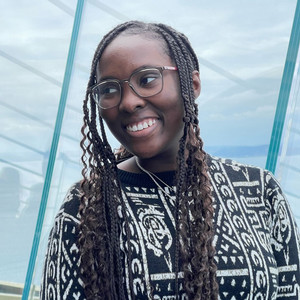
Sedinam Biassey-Bogart, PhD Student
Sedinam graduated from the University of Colorado Boulder with a B.A. in Geophysics and a minor in Astronomy. During her undergraduate studies, she had the opportunity to work on a variety of projects, including analyzing a Venusian impact crater during an internship at the Lunar and Planetary Institute and characterizing potential landing sites for the Mars Sample Return mission at NASA's Jet Propulsion Laboratory. Her senior honors thesis focused on using analytic glacial isostatic adjustment (GIA) models to calculate Earth’s viscoelastic response to loading and unloading. She gained an interest in planetary magnetism simply by reading about the topic and taking classes. Now, she's very excited to utilize the skills she acquired over the years in her work on tidally driven dynamos with Dr. Cauê Borlina as her advisor. Sedinam also loves outreach and is passionate about diversity, equity, and inclusion in STEM fields!
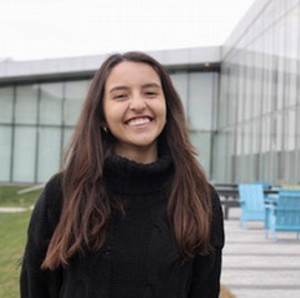
Mariana Blanco-Rojas, PhD Student
Mariana joined Purdue in 2023 as a PhD student in Dr. Mike Sori's group after completing her B.A in Physics and Origins Sciences at Case Western Reserve University. She’s primarily interested in the geodynamics of the icy moons of the outer solar system, as well as what we can learn about planetary surfaces through the analysis of remote sensed data. Outside of academics, Mariana enjoys rock climbing, jogging, embroidering, and has recently gotten into birding!

Austin Blevins, PhD Student
Austin Blevins was born 15 miles south of Detroit in the town of Trenton, Michigan. He became interested in planetary science and astronomy from a young age thanks to his parents owning a telescope. He attended the University of Michigan-Dearborn, where in 2018 he earned his Bachelor of Science degree in Earth Science with a minor in Astronomy. He studies the impact history of the Moon, particularly early period of the Solar System. Outside of research, Austin enjoys video games and stargazing.
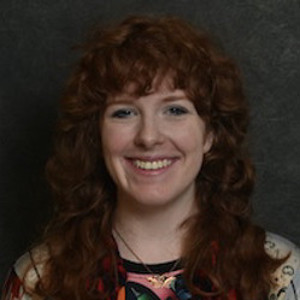
Haleigh Brown, PhD Student
Haleigh completed her BA in Computational Physics with minors in Computer Science and Mathematics at the University of Montana in 2023. During her time as an undergraduate she worked with the Montana Space Grant Consortium on predicting weather balloon drift paths. This experience led her to discover her interest in computational modeling and planetary science. Haleigh is now a PhD student working with Dr. Stephanie Olson in the Purdue Habitability & Biosignatures Lab. Her current research is focused on investigating how stellar flux, continental configuration, rotation rate, and surface pressure affect wet and dry cycles on early Earth and beyond.

Ashika Capirala, PhD Student
Ashika received her B.S. in Earth and Space Sciences with a minor in Chemistry from the University of Washington in 2021. During her undergraduate career, she worked on paleoenvironmental reconstruction of Eocene monsoonal environments using stable isotopes. Ashika is interested in the co-evolution of life and its environment and habitability over time and space. She is currently working with Dr. Stephanie Olson on exploring the role of the marine biosphere and ocean circulation on planetary oxygenation.
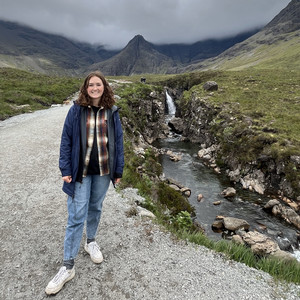
Brianne Checketts, PhD Student
Brianne earned her B.S. in Planetary Science and Physics with minors in Astronomy and French from Purdue University in May 2024. Her past research experience focused on dark halo craters on the Moon and the paleoclimate record in layered ice deposits in craters on Mars. Now she is continuing her work with Dr. Mike Sori on the paleoclimate record in polar outlier deposits on Mars.

Stephanie Connell, PhD Student
Stephanie Connell received her Bachelor of Science at the University of Winnipeg in Environmental Studies and Sciences focused on Global Environmental Systems. During her undergrad, Steph worked at the Centre for Terrestrial and Planetary Exploration and conducted research in the field of planetary science in spectroscopy, mineralogy, Mars habitability, and rover analog missions at Mars and lunar relevant sites. Stephanie also participated in a student-led space mission using a 3-U CubeSat for a low-Earth orbit geological experiment. During her time at the U of W, Steph joined the Mars2020 science team and became involved in various roles for Perseverance doing Mars rover operations. Currently, Stephanie is continuing her work with Mars2020 doing rover operations for Dr. Roger Wiens and will use data from the SuperCam instrument to observe the chemistry and mineralogy of rocks and “soils” on the surface of Mars.
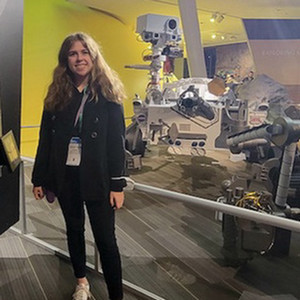
Margaret Deahn, PhD Student
Margaret graduated from SUNY Geneseo in 2021 with a B.A. in Geological Sciences and minors in Mathematics and Geography. Her undergrad research focused on quantifying the morphometry of valley networks and bedrocks canyons on Earth and Mars. She has completed three internships in the Planetary Geosciences group at NASA Jet Propulsion Laboratory characterizing landing sites for various Mars missions. In 2023, she earned an M.A. in Earth and Planetary Sciences at Wesleyan University where she produced a geologic map of the DAVINCI probe target descent site on Venus. She is now excited to be returning to Mars research working under Dr. Briony Horgan studying surface processes in and around Jezero crater as a student collaborator on the Mars 2020 science team!
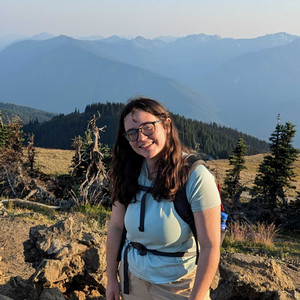
Abbey Dunnigan, PhD Student
Abbey earned her B.S. in Physics at the University of North Carolina at Chapel Hill in 2024. During her undergraduate studies, she became interested in planetary interiors through internships at the University of Texas at Austin and NASA Jet Propulsion Laboratory, where she studied core models for Mercury and Venus. Currently she is working with Professor Mike Sori, using gravity inversions to study ice on Mars.
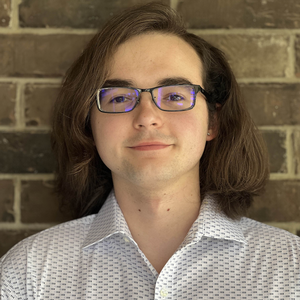
Trevor Erwin, PhD Student
Trevor Erwin graduated from the University of Texas at Austin (UT) with a B.S. in both Astronomy and Physics. While at UT, their work focused on new models for exoplanet atmospheres. After graduating, Trevor began working at Southwest Research Institute where they studied the geology of Europa as part of the Europa Clipper mission. Currently, Trevor is a PhD student working with Dr. Alexandria Johnson studying the atmospheres of distant planets and moons throughout our solar system.
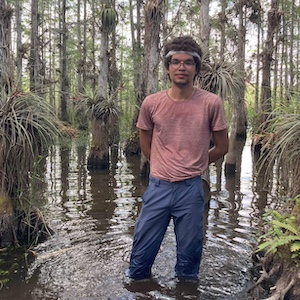
Sam Harris, PhD Student
Sam earned his B.S. in Geosciences from Florida Atlantic University where he worked on projects using radar to characterize biogenic gas production within peatlands. At Purdue, Sam works with Prof. Ali Bramson using radar data to better understand subsurface features on the Earth, Moon, and Mars. Outside of research, he enjoys playing jazz (brass and guitar) and playing basketball.

Athanasios Klidaras, PhD Student
Athanasios received his BSc and MSci in Geology from Imperial College London (UK) in 2022. His MSci dissertation involved mapping volcanism on Venus using Synthetic Aperture Radar. Athanasios currently works with Prof Briony Horgan as part of a project studying the stratigraphy and mineralogy of Noachian-aged clay deposits in order to shed light on the landscape and climate of ancient Mars. In his spare time, he enjoys hiking and listening to history podcasts.

Alexander Kling, PhD Student
Alexander is from New York City and earned his BS in Geology from Stony Brook University in 2020. His undergraduate research included a range of laboratory spectroscopy projects relevant to airless bodies in our solar system such as the Moon, Phobos, and Bennu. Alexander currently works with Dr. Michelle Thompson and is studying regolith samples returned during the Apollo program to understand how water forms on the Moon in relation to the space weathering processes that alter the lunar surface.

Emilie Lafleche, PhD Student
Emilie received her BS in Honours Planetary Sciences at McGill University in June 2021. She is currently studying biospheric seasonality on early Earth and Earth-like exoplanets under the mentorship of Stephanie Olson in the Purdue Habitability and Biosignatures (PHaB) Lab. During her undergrad, Emilie worked on several research themes, including surface mapping of simulated exoplanets, remote sensing of lunar impact melt deposits, and experimental precipitation of Mg-clays from biotic solutions. Outside of the lab, she is a member of the EAPS Outreach Committee and is participating in her first analog space simulation mission at LunAres Research Station in June 2022.
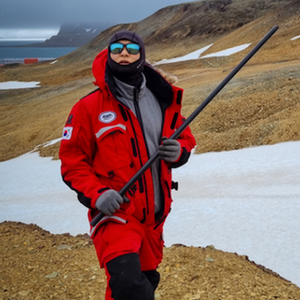
Dong Jae Lee, PhD Student
DJ (Dong Jae) completed his B.S. with a double major in Earth Science and Computational Science from Seoul National University, Korea. He worked as a polar researcher at the Korean Polar Institute, including being stationed for more than a year in Antarctica as a overwinter team for the King Sejong Base. Currently, DJ works with Professor Roger Wiens and is focused on Micro LIBS, ML assisted remote sensing and data science applications for planetary science including instrument development. He played baseball in college and enjoys traveling to random places to play poker.

Ishaan Madan, PhD Student
Ishaan Madan graduated with a BA in Biochemistry in 2022 from Wheaton College, Massachusetts. He began his PhD in Fall 2024. He transitioned from a pre-med focus to space sciences and astrobiology, driven by a childhood fascination with space exploration missions and life beyond Earth. Beginning his research career with no prior experience, he gradually advanced to a role on NASA’s Dragonfly Mission over his undergraduate career. After a brief period at Epic Systems (2022–24), he recently left the corporate world to fully dedicate myself to space sciences. He will pursue a Ph.D. in Planetary Sciences, aiming to contribute significantly to future space missions and the growing field of astrobiology. Beyond academia, his hobbies include fitness, reading, podcasts, meditation, journaling, dancing, and soccer.

Henry Manelski, PhD Student
Henry received his BSc from Columbia University in Applied Mathematics in 2022. Currently, he is a PhD student working with Professor Roger Wiens on exploring Martian geochemistry using LIBS and VISIR spectroscopy as a member of the SuperCam science team. Outside of research, he enjoys language learning and stargazing.
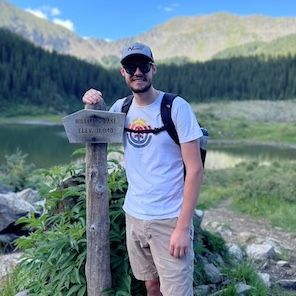
Noah Martin, PhD Student
Noah received his BS in Aeronautical and Astronautical Engineering from Purdue University in 2023, with a concentration in astrodynamics and space applications and a minor in EAPS. During his undergraduate degree, Noah held multiple undergraduate research positions, including the Purdue Summer Undergraduate Research Fellowship, and earned his private pilot license at the Purdue University airport. Noah also held a summer internship and a year-long post-bachelor position at Los Alamos National Laboratory, where he joined the Mars2020 team and became involved in Perseverance rover operations. Currently, Noah is continuing his work with Mars2020 as a PhD student working with Dr. Roger Wiens focused on the effects of Martian “soils” on LIBS spectra and acoustic responses. He is also playing a role in the development of the OrganiCam instrument.

Lisette Melendez, PhD Student
Lisette completed their B.S. in Geology and Astronomy at the University of South Florida in 2021. Their past research includes studying the boulder morphology of asteroid Bennu and its possible links to carbonaceous chondrites found within the collections of the Smithsonian NMNH, as well as examining the effects of paraglaciation across the mid-latitudes of Mars. Currently, Lisette is a PhD student working with Dr. Michelle Thompson on characterizing the effects of space weathering in samples from asteroid Ryugu - and soon, asteroid Bennu! - using transmission electron microscopy.
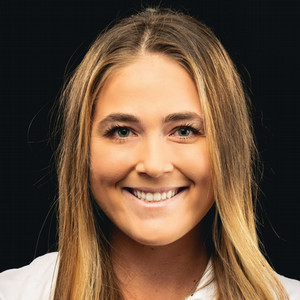
Liz Norman, PhD Student
Liz received a BS from North Carolina State University in 2017, majoring in Physics and minoring in Mathematics and Geology. She later received a MS at Purdue University in the Geodata Science for Professionals Program where her research was on optimizing optical follow-up observations to a SNEWS alert. She now works with Dr. David Minton on understanding how distal ejecta shapes the surface of the Moon.

Ian Pamerleau, PhD Student
Ian received a BS in Geology and Mathematics from the University of Pittsburgh where he helped develop an automated floodplain mapping algorithm. Now, he is working toward a PhD with Dr. Mike Sori studying planetary geophysics and surface processes. His interests lie in understanding these processes and what they can tell us about the history and interior of planets. Currently, he is working on constraining Ceres’ crustal ice content using FEM models of viscously relaxed craters.

Santa Lucía Pérez Cortés, PhD Student
Santa Lucía Pérez Cortés received her BS in Geology from the University of Puerto Rico-Mayaguez Campus in June 2022. During her undergraduate studies, she worked on research related to eolian geomorphology looking at scouring pits in the Medusa Fossae Formation and depressions across North Polar dunes on Mars. Currently, Santa is a Ph.D. student working with Dr. Ali Bramson, and her current research is focused on studying the formation of landslides on different planetary bodies across the Solar System. She enjoys hiking, reading, and (whenever she gets the chance to go back home) warm weather.
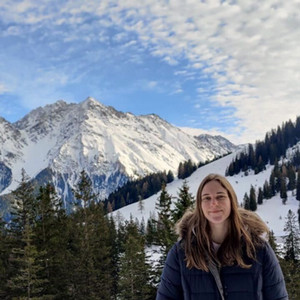
Mia Rudin, PhD Student
Mia Rudin graduated with a B.S. in Geology and minor in Geospatial Information Science from the University of Texas at Dallas in 2024. She worked with micrometeorites and ablation spheres in deep sea sediments as an undergraduate researcher, and used thermodynamic modelling to understand the crystallization of Martian alkali basalts as an LPI intern. She was involved with the UTD Meteorite Education and Research Lab, the UTD basketball team, and the GeoClub. At Purdue, she is working with Dr. Roger Wiens to understand meteorites on the surface of Mars.
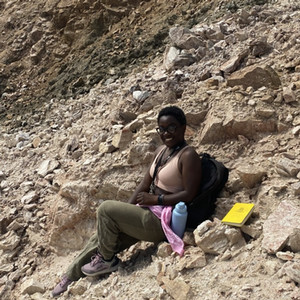
Jae St. Pierre, PhD Student
Jae St.Pierre graduated from Indiana university Purdue University – Indianapolis with degrees in Geology BA and Anthropology BA. Her undergraduate geological research was in paleoclimatology and igneous petrology where she studied the megadrought record of oxbow lakes in the midcontinental US, as well as studied the chemical and petrological properties of a carbonatite volcano in Tanzania, Africa. Jae currently works with Dr. Michelle Thompson where she will analyze lunar and analog terrestrial samples preserved in a cryogenic state to determine the chemical composition of volatiles found in irradiated frozen lunar samples returned from the Artemis III mission. In her downtime, Jae loves to hike, camp, and play with her pets Dracrys and Leo.
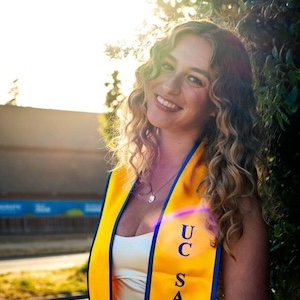
Mia Trodden, PhD Student
Mia Trodden graduated from the University of California Santa Cruz with a BS (Hons) in Earth Sciences and a concentration in Planetary Sciences in December of 2023. She began her PhD in Fall 2024. During her undergraduate studies, she did research in a cosmochemistry lab where she conducted meteorite outgassing experiments to further understand the composition of Earth's early terrestrial atmosphere. Around that time, she learned some meteorites hold over 90 amino acids while life on Earth only utilizes 20 amino acids. This revelation fueled her desire to explore the origins of life and atmospheric chemistry during her PhD, as she believes meteorites and Earth's early atmosphere played a significant role in the origins of life on Earth. At Purdue University, she will pursue a PhD in Planetary Sciences where she will work on answering the mysteries of life on Earth and beyond. She is so excited to begin this journey and very thankful for the opportunity to work with Dr. Pearce in the Origins and Astrobiology Research Laboratory at Purdue! Outside of academia she enjoys running, pilates, playing guitar, traveling, and spending time her friends and family!